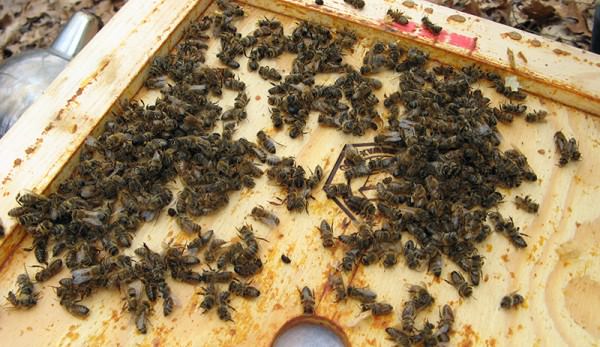
For a new beekeeper—who’s freshly invested in woodenware and a buzzing package of bees, dressed in a crisp, white beesuit—the thought of cleaning up after a dead beehive or diseased colony might be daunting. Or rather, unthinkable. But if you’re in beekeeping long enough, it’s an inevitability. Honeybee hives don’t last indefinitely, and it’s a rough lesson to learn, even if your hive is a few short years old, or if your bees have swarmed and re-queened a dozen times. Certainly there are lessons to be learned about how and why a colony has met its end, and some of those clues are in the physical hive they leave behind.
Treat The Dead Beehive Like A Live Colony
Chances are, you’re cleaning up after a hive that still has comb as well as some honey or pollen in it. If that’s the case, you’ll witness some serious robbing by bees and wasps from the surrounding area. It’s wise to wear the suit or attire you feel comfortable in for regular inspections.
Assess The Situation
What are the clues in the dead beehive? Are the bees dead in a cluster? Have they absconded? Do you see evidence of disease or pest infestation, such as wax moth or hive beetles?
Triage The Affected Frames & Comb
It helps to make several piles as you go through the dead beehive: frames to save, frames to salvage and frames to trash. What you throw away will depend a great deal on the way the bees died. If a particularly nasty disease such as American or European foulbrood has been the cause, you should throw away any frames or comb that seem remotely effected.
Spend Time Salvaging The Rest
Assuming the bees didn’t die of a disease, and you are comfortable in reusing the woodenware, you can clean it and burn it out with a blow torch (please use necessary safety precautions) to ready it for the next hive.
As you go through the process, you might see bees flying around, milling about and crawling over the combs within the hive. These bees might be what’s left of your colony, or they might be robber bees from nearby colonies.
It’s always hard to lose bees. It can be one of the most demoralizing aspects of keeping bees, especially for newbies just learning the ropes and seeing dead hives and disease for the first time. But don’t lose hope. Yet take this as the opportunity that it is: Shoot photographs of the dead hive, take notes and present your findings to your local bee club. Ask your mentor for insight and tips for the future. If you discover mistakes you’ve made, learn from them, and make changes to your beekeeping practices. Losing bees is an inevitability, but how you handle it is what makes you a better beekeeper.




